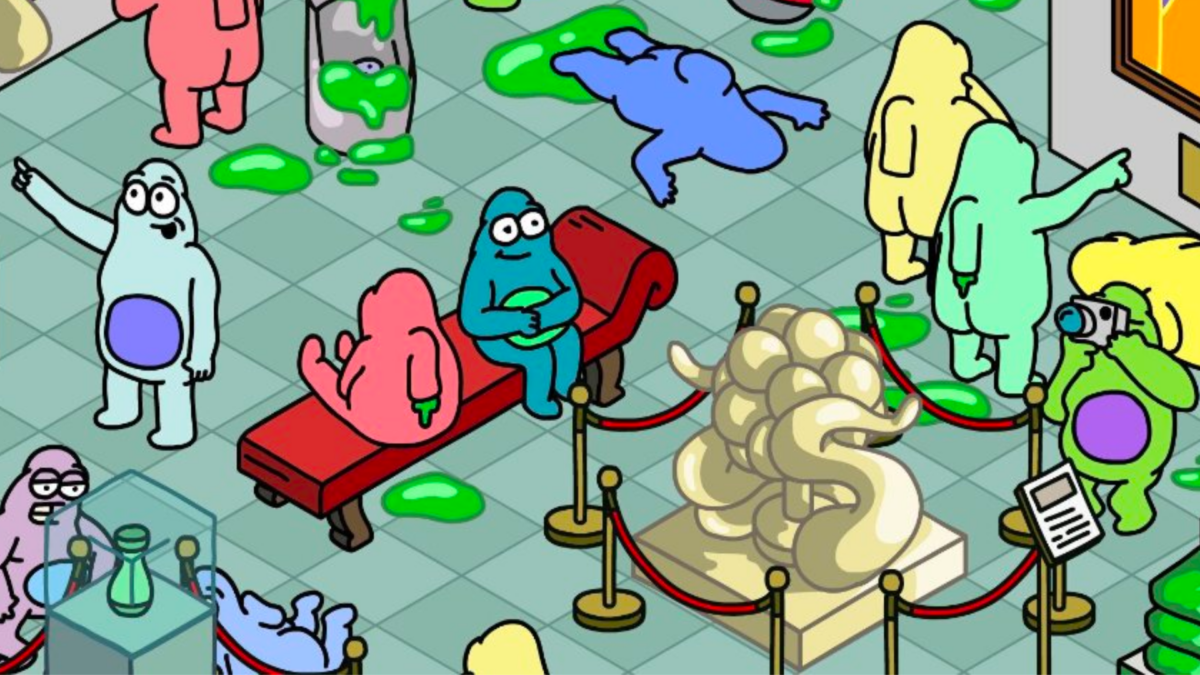The Alpha:
- Art Gobblers, the NFT project brainchild of Rick & Morty co-creator Justin Roiland and Web3 firm Paradigm, has taken the NFT world by storm, having done a total of 7,426 ETH (just shy of $12 million) in trading volume on OpenSea within the first day of its existence.
- According to NFTstatistics.eth, the project, whose floor price sits at 12.5 ETH, rocketed into the top 10 list of projects for total ETH volume in October, barely an hour after minting out.
- The project’s unique ideas, instant success, and controversy surrounding its allowlist process have made it a lightning rod for discussion and debate on Twitter.
Why it matters
Art Gobblers injects some novel ideas into the NFT ecosystem. Though the details are worth giving the project’s white paper a thorough read, the essence is that Art Gobblers aims to create a self-sustaining NFT mini ecosystem capable of thriving on its own.
The 2,000 Gobblers from the project’s free mint “gobble art,” meaning they eat the art that artists draw using the project’s draw tool. These drawings are then turned into 1-of-1 NFTs using in-project resources. The totality of the artworks that a Gobbler eats are stored on chain and will be displayed in its “belly gallery” forever. These drawing NFTs are ERC721 tokens that belong to the artists who create them and can be transferred or sold by the artist whenever they want.
The Gobbler NFTs also produce Goo tokens, which are used to make the blank pages required to create the art they consume. The more Goo a Gobbler has in its “tank,” the more Goo it can create. This token is designed to grow without end, so the ecosystem can’t be balanced by giving NFTs fixed prices in Goo. Instead, the Paradigm team has come up with something called a VRGDA, a type of Gradual Dutch Auction that adjusts prices over time, raising them when sales are frequent and lowering them when they are lagging.
The Art Gobblers team has designed the ecosystem to release 69 blank pages daily to encourage artistic experimentation in the community but then lower it to a steady 10 per day to ensure focus from members who make art on the blank pages. Over the next ten years, “players,” as the project white paper calls them, will have to spend Goo to mint 8,000 more Gobblers. There are also 10 1-of-1 Legendary Gobblers that members can obtain by burning large amounts of regular Gobbler NFTs, which encourages community-wide collaboration.
What’s next
Just as news of Art Gobblers’ success began to emerge, so did critiques of who made the project’s allow list for the free mint. NFT heavy-hitters like Farokh, Zeneca, Andrew Wang, and others received allow list spots for the project, causing some to speculate whether nepotism and collusion have influenced who does and does not get access to these coveted spots. Calls for influencers in the space to disclose when they’ve been given an allow list spot for promoting a project have grown increasingly strident due to the circumstances surrounding Art Gobblers’ emergence.
The debate that follows will be an uncomfortable but important one. Art Gobblers isn’t the first project to attract such criticism, and it’s doubtful that it will be the last. Regardless, the evolution of the project’s unique characteristics and experimental ideas will be fascinating to see. Innovation like this injects much-needed creativity and activity into the NFT space in the middle of a bear market. Controversy or not, that’s to be commended. If Art Gobblers can sustain its popularity and significance in Web3 long-term, that will be even more impressive.
But wait! There’s more:
Credit: Source link
































